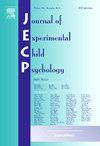Contingency in maternal sensitivity and quality of child attachment
IF 1.8
2区 心理学
Q3 PSYCHOLOGY, DEVELOPMENTAL
引用次数: 0
Abstract
Patterns of mothers’ contingent responses to their 8-month-old infants were studied across three groups based on the attachment style that children developed at 15 months, assessed with the Strange Situation Procedure: insecure–avoidant, secure, and insecure–resistant. The participants were 78 mother–infant dyads who interacted in a free-play setting. The interactions were assessed using the Early Mother–Child Interaction Coding System–Revised, an observational system that allows real-time coding. Two dimensions of maternal sensitivity, appropriateness and promptness, were analyzed from the perspective of the infants: appropriateness in terms of proportion of different maternal responses, interfering and not interfering (qualitative profile), and the frequency of them (quantitative), and promptness as the latency of the contingent responses. Results showed that infants in the secure attachment group received a lower proportion of interfering behaviors when interacting with their mothers than their insecure attached counterparts. They also experienced higher frequency of non-interfering maternal contingent responses and quicker, protective–intrusive responses. Therefore, the secure attachment group of children experienced less interruption and more attentive responses from their mothers.
求助全文
约1分钟内获得全文
求助全文
来源期刊

Journal of Experimental Child Psychology
Multiple-
CiteScore
4.50
自引率
7.70%
发文量
190
期刊介绍:
The Journal of Experimental Child Psychology is an excellent source of information concerning all aspects of the development of children. It includes empirical psychological research on cognitive, social/emotional, and physical development. In addition, the journal periodically publishes Special Topic issues.
 求助内容:
求助内容: 应助结果提醒方式:
应助结果提醒方式:


